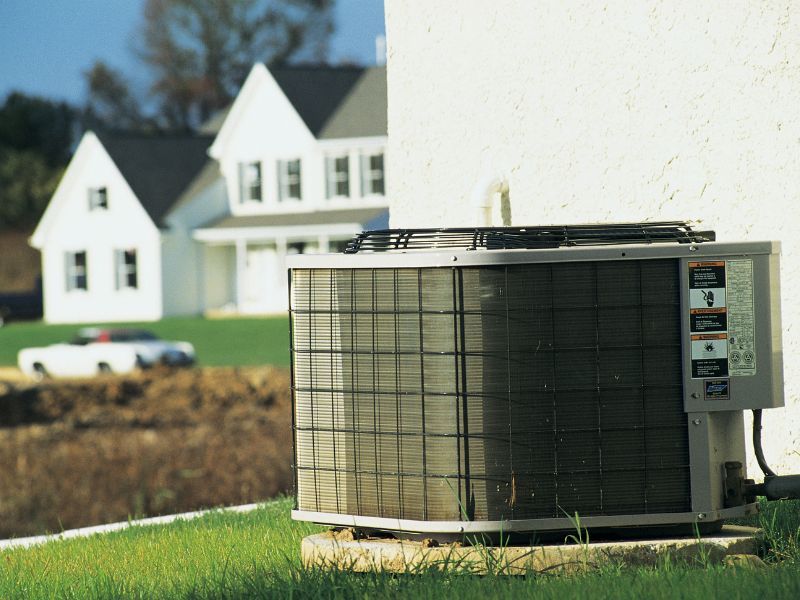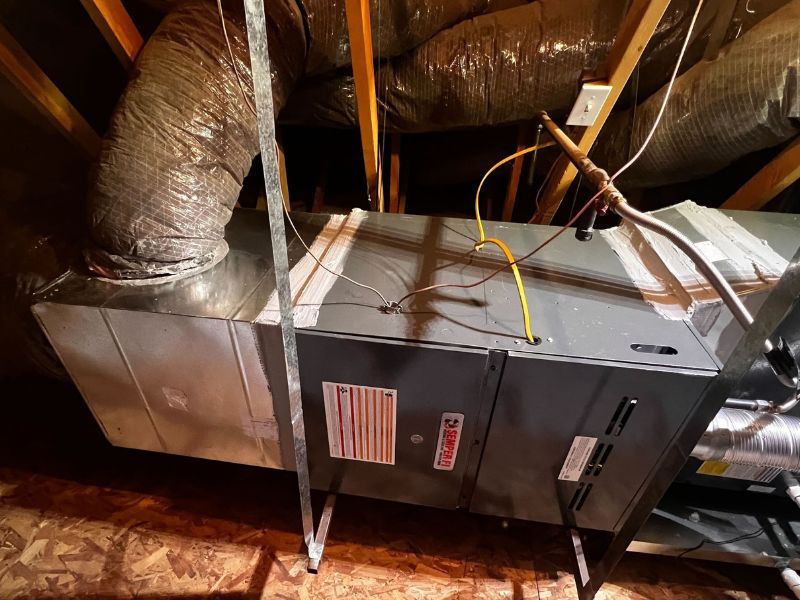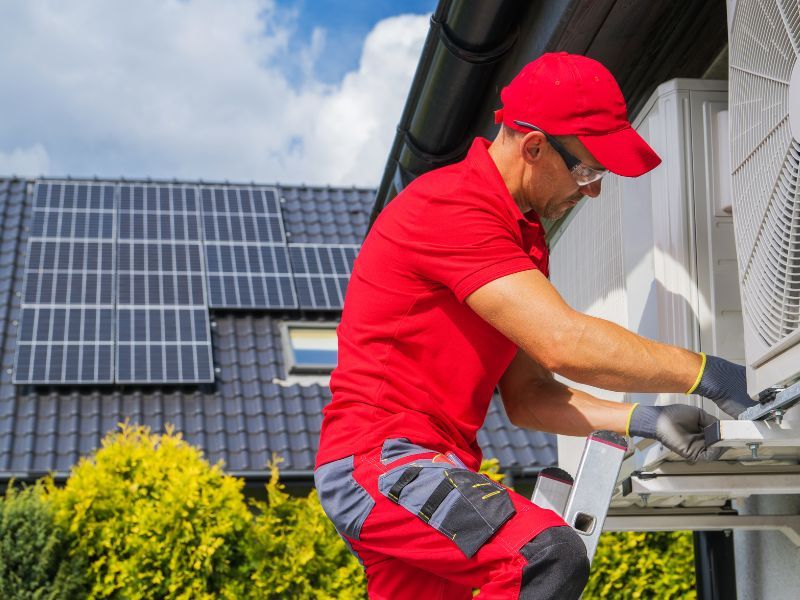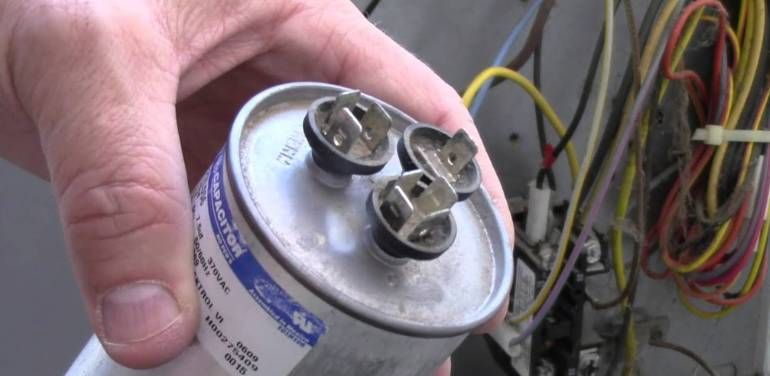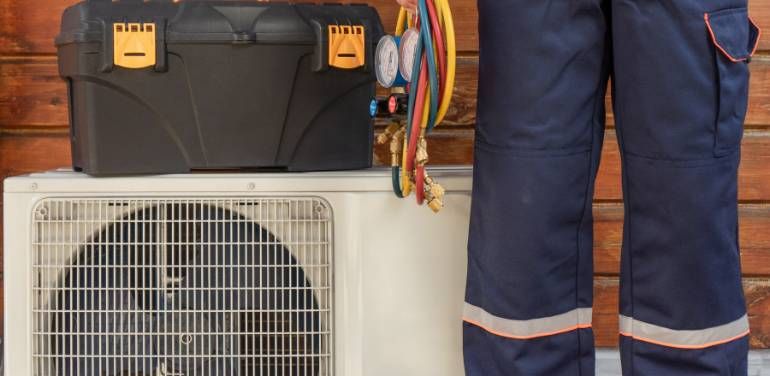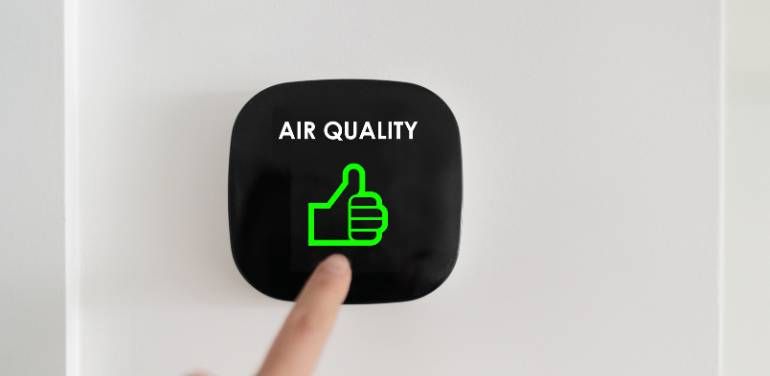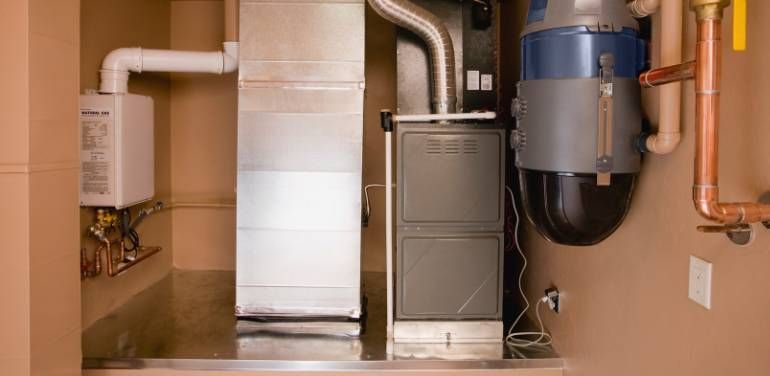What’s the Average Cost Per Lead for HVAC?
I once consulted for an HVAC company that was spending $75 on average per lead, yet their closing rate was disappointingly low. This raised an essential question for me: how do we determine what’s an acceptable cost per lead in this industry? The lead cost is just one piece of the puzzle. Schedule rate and closing rate has a huge impact on what a business can afford to pay for a lead. HVAC Businesses that have a very effective sales team and a higher average ticket can afford to pay more for their leads. This opens the door to more expensive lead sources such as PPC. With varying factors like market demand and competition influencing these numbers, understanding the dynamics at play can be key to optimizing your marketing strategies. If you’re wondering how to navigate these costs effectively, let’s explore some insights together.
Need More HVAC Replacement Leads? Click Here to Check Out UpFrog!
Key Takeaways
- The average cost per lead (CPL) in the HVAC industry varies between $60 to $399 based on market demand and lead generation medium employed.
- It’s wise to measure (Cost Per Appointment) and (Revenue Per Lead) to get a full funnel look at lead sources.
- Seasonal fluctuations can significantly affect CPL, with spikes in cost during shoulder season and drops during peak demand periods.
- Effective lead generation methods include social media engagement, email campaigns, and local SEO, which can help lower CPL.
- Referral programs are a cost-effective way to generate leads, leveraging satisfied customers to attract new ones.
- Regular analysis and optimization of marketing budgets and channels can enhance lead quality and reduce overall CPL.
Understanding Cost Per Lead

When it comes to running an HVAC business, understanding cost per lead (CPL) is essential for maximizing your marketing efforts. It helps me evaluate the effectiveness of my lead acquisition strategies and guarantees that I’m targeting the right customers. When I analyze different pricing models, I can determine which advertising strategies yield the best results and the highest conversion rates.
I often compare my CPL against industry benchmarks, as this gives me a clear picture of where I stand. If my costs are higher than average, I know I need to reassess my customer targeting to confirm I’m not overspending. Additionally, conducting a thorough ROI analysis helps me understand the long-term value of each lead.
Current HVAC Industry Statistics
As I look at the current HVAC industry statistics, I see some fascinating trends in lead generation methods. It’s clear that understanding these trends can help us make smarter decisions about where to invest our resources. Let’s explore how these statistics reflect industry cost trends and what they mean for us moving forward.
Lead Generation Methods
How do HVAC companies effectively generate leads in today’s competitive market? It’s essential to leverage multiple strategies to guarantee safety and build trust with potential customers. Social media plays a big role, allowing us to engage with our audience directly and share valuable content. Content marketing, including informative blog posts and videos, helps position us as experts in the field while educating homeowners on HVAC safety.
Referral programs can also be incredibly effective; satisfied customers are often our best advocates. Email campaigns help keep our services top-of-mind, providing timely updates and promotions. Additionally, local SEO guarantees that our business appears in search results when potential clients look for HVAC services nearby.
Networking events and trade shows give us opportunities to connect face-to-face, while paid advertising can target specific demographics effectively. Finally, customer testimonials and online reviews serve as social proof, reassuring potential clients about the quality of our services. Each of these lead generation methods, when combined, creates a robust strategy that emphasizes safety and reliability, helping us thrive in the HVAC industry.
Industry Cost Trends
Understanding the HVAC industry’s cost trends is vital for anyone looking to optimize their lead generation strategies. As I explore these trends, I see how various factors influence average pricing and ultimately affect our bottom line. Here are a few key points to evaluate:
- Seasonal fluctuations: Demand for HVAC services often peaks during extreme temperatures, affecting lead costs.
- Regional differences: Prices vary markedly based on location, requiring a keen competitive analysis.
- Service diversification: Offering a wider range of services can help balance costs throughout the year.
In today’s landscape, marketing budgets play an important role in adapting to digital trends. Understanding customer demographics allows us to tailor our campaigns effectively. For instance, with younger homeowners increasingly seeking energy-efficient solutions, adjusting our strategies can yield better results.
Factors Affecting Lead Costs
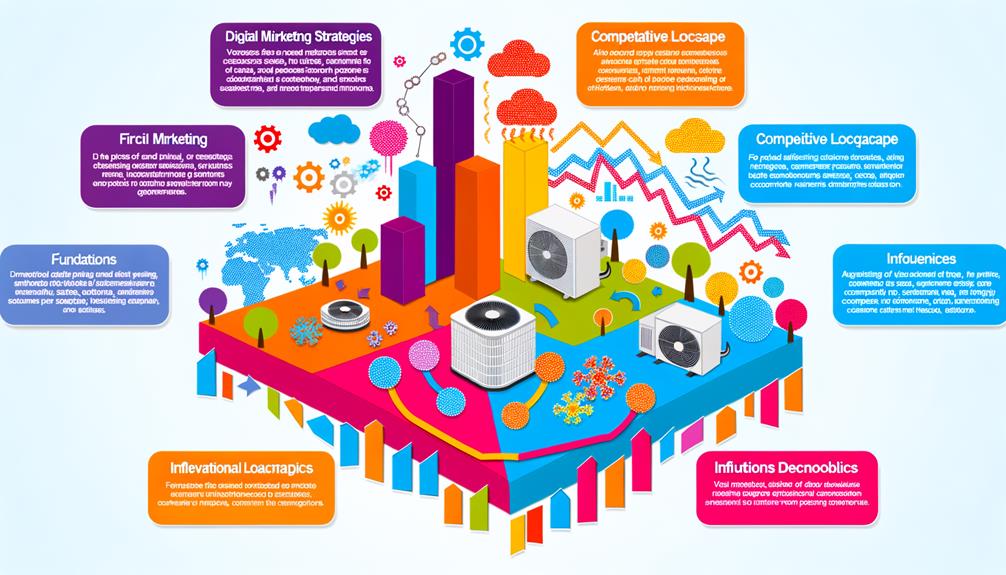
When considering lead costs in the HVAC industry, several key factors play a significant role. First off, lead pricing can vary dramatically based on market demand. When demand surges, you might find yourself paying more for each lead. Customer demographics also matter; understanding who your ideal customer is can streamline your advertising strategies and improve conversion rates.
Seasonal fluctuations can affect lead costs too. For instance, during summer or winter, when HVAC services are in high demand, you may see an increase in lead pricing. Your service area is another important factor. A larger service area might mean more potential customers, but it can also lead to higher competition analysis costs.
Speaking of competition, it’s important to keep an eye on how other businesses are pricing their leads. This helps you adjust your strategies accordingly. Additionally, adhering to industry benchmarks can guide your expectations regarding lead costs. Finally, the range of your service offerings can influence lead prices; the more specialized your services, the more you may need to invest to attract the right leads. By understanding these factors, you can make informed decisions that prioritize safety and effectiveness.
Comparing Lead Generation Channels
Choosing the right lead generation channel can greatly affect your HVAC business’s success. Each channel has its advantages and potential costs, so I’ve found it helpful to compare them based on effectiveness and safety.
Here are three key channels to evaluate:
- Social Media: Engaging with customers on platforms like Facebook and Instagram can build trust and brand awareness.
- Referral Programs: Encouraging satisfied customers to refer friends can be a low-cost way to generate leads.
- Local SEO: Optimizing your website for local searches guarantees you appear when customers need HVAC services.
I’ve also explored other effective methods like email marketing and pay-per-click advertising, which can yield quick results. Trade shows and networking events are great for building partnerships, while content marketing helps establish authority in the field. Don’t underestimate the power of customer reviews; they can greatly influence potential leads.
Ultimately, it’s about finding the right mix for your business. By choosing the channels that align with your goals and values, you can create a safer, more efficient lead generation strategy that drives growth.
Optimizing Your Marketing Budget
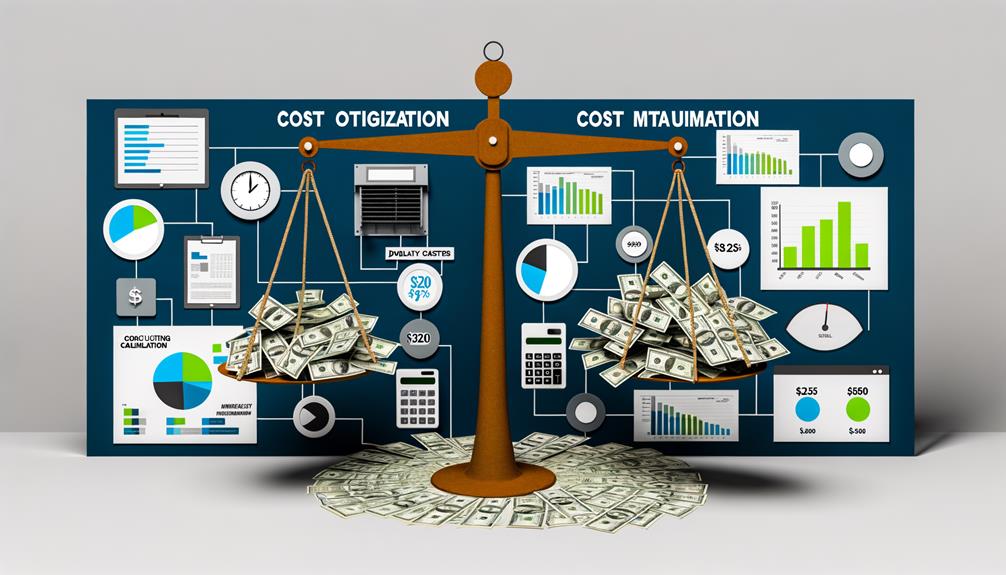
Maximizing your marketing budget is vital for driving leads efficiently in the HVAC industry. I know how important it is to allocate funds wisely to guarantee safety and effectiveness in your campaigns. First, I recommend analyzing past expenditures. Look at where your budget’s been allocated—identify which channels yielded the best results. This will help you focus on marketing efficiency.
Next, prioritize channels that not only bring in leads but also align with your safety standards. Investing in targeted online ads can be a game-changer, but I’ve found that having a strong social media presence can also foster trust and reliability. By engaging with potential customers, I can create a sense of security around my brand.
Moreover, don’t shy away from testing different approaches. Reallocate funds based on performance—if one strategy isn’t delivering, adjust your budget allocation promptly. Regularly reviewing your marketing efforts guarantees I stay on the right track. By being proactive and adaptable, I can make the most of my budget while keeping safety as a top priority. After all, a well-optimized marketing budget not only drives leads but also builds a trustworthy brand in the HVAC market.
Measuring Lead Quality
After optimizing my marketing budget, it’s time to focus on measuring lead quality. I’ve realized that not all leads are created equal, and understanding this can greatly impact my HVAC business. A solid lead quality assessment is vital for ensuring that my efforts yield high-value clients.
Here’s what I consider essential in effective tracking of lead quality:
- Conversion Rate: How many leads turn into paying customers? This metric helps me gauge the effectiveness of my outreach.
- Lead Source: Identifying which channels bring in the most qualified leads allows me to make informed decisions about where to allocate resources.
- Engagement Level: I pay attention to how potential clients interact with my marketing materials. This indicates their interest and readiness to purchase.
Strategies to Reduce Costs
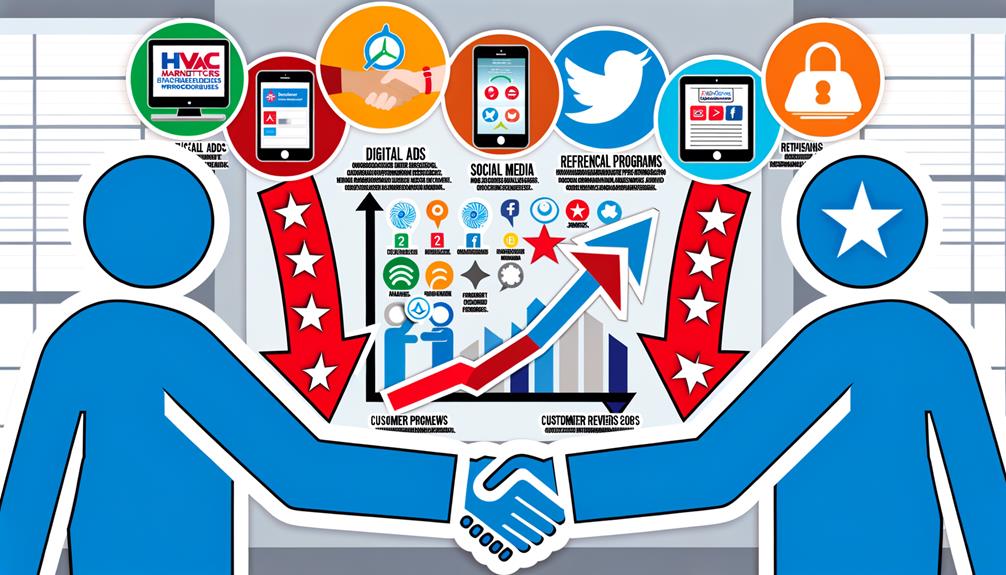
When it comes to reducing costs in HVAC lead generation, I’ve found that optimizing marketing channels can make a huge difference. Implementing lead scoring helps me focus on the most promising prospects, while leveraging automation tools streamlines the entire process. Let’s explore these strategies together to boost efficiency and lower expenses.
Optimize Marketing Channels
To effectively optimize marketing channels and reduce costs in the HVAC industry, I recommend focusing on data-driven strategies that target your ideal customer. By honing in on the right platforms and methods, you can achieve better results while keeping expenses low. Here are three strategies I find particularly effective:
- Leverage social media: Engage with your community through platforms like Facebook and Instagram. Share valuable content that showcases your expertise and builds trust.
- Utilize email campaigns: Craft targeted emails that provide helpful tips and special offers. This keeps your brand top-of-mind and encourages repeat business.
- Develop referral programs: Encourage satisfied customers to refer friends and family. Word-of-mouth remains one of the most credible forms of advertising.
Additionally, invest in SEO strategies to enhance your online presence, and consider video marketing to visually demonstrate your services. Local advertising can also effectively reach your target audience. Finally, explore partnership opportunities with related businesses for mutual benefit. By implementing these strategies, you’ll not only optimize your marketing channels but also guarantee a safer and more efficient approach to reaching potential leads in the HVAC sector.
Implement Lead Scoring
Optimizing marketing channels sets the stage for implementing lead scoring, a powerful strategy that can greatly reduce costs. By using a scoring model, I can prioritize leads based on specific lead scoring criteria that reflect their potential value. This helps me focus on the leads most likely to convert, ultimately saving both time and resources.
In my experience, defining lead scoring criteria involves evaluating factors like a lead’s engagement level, budget, and urgency. For instance, if a homeowner shows high interest in energy-efficient HVAC systems and has a project timeline in mind, they’ll score higher than someone just browsing. This approach not only streamlines my sales efforts but also increases the likelihood of closing deals with qualified leads.
I’ve also found that having a clear scoring model allows me to identify which marketing channels yield the best quality leads. This insight helps me allocate my budget more effectively, enhancing my overall return on investment. By implementing lead scoring, I can guarantee that every marketing dollar spent is directed toward leads that are more likely to become satisfied customers, enhancing safety and reliability in my HVAC business.
Leverage Automation Tools
Automation tools have become a game changer in reducing costs for my HVAC business. By embracing these technologies, I’ve streamlined operations, guaranteeing efficiency while maintaining safety for my team and customers. The automation benefits are clear, and I’ve been able to integrate various tools that enhance productivity without compromising service quality.
Here are a few key automation tools I’ve found invaluable:
- Customer Relationship Management (CRM): Centralizes client information, making follow-ups and communication seamless.
- Scheduling Software: Automates appointments, reducing no-shows and optimizing my team’s time on the road.
- Marketing Automation: Helps manage leads and campaigns, guaranteeing I reach potential customers effectively.
These tools not only save time but also minimize errors, contributing to a safer work environment. Tool integration has allowed me to connect different systems, creating a cohesive workflow that guarantees no detail slips through the cracks. As I continue to leverage automation, I’m confident that these strategies will help further reduce costs while enhancing customer satisfaction. By investing in automation today, I’m setting my HVAC business up for a safer and more efficient tomorrow.
Trends in HVAC Marketing
The landscape of HVAC marketing is constantly evolving, driven by technological advancements and changing consumer behaviors. I’ve seen how digital advertising plays a pivotal role in reaching potential customers who prioritize safety in their homes. Engaging with clients through social media doesn’t just boost brand awareness; it also fosters trust, which is vital in our industry.
Content marketing is another trend that can’t be overlooked. By sharing valuable information about HVAC systems, maintenance tips, and energy efficiency, I can position myself as a knowledgeable resource. This approach not only enhances customer engagement but also addresses safety concerns that many homeowners have.
Local SEO is essential too. When folks search for HVAC services in their area, ensuring my business appears prominently helps me connect with those who need reliable service. Seasonal promotions can draw in customers looking to prepare their systems for extreme weather, making it a win-win situation.
Lastly, implementing referral programs can encourage satisfied clients to spread the word. After all, when safety is at stake, a personal recommendation goes a long way. By keeping up with these trends, I can effectively meet the needs of my community while promoting a safe and comfortable environment.
Frequently Asked Questions
What Are Common Lead Generation Methods for HVAC Businesses?
I’ve found that effective lead generation methods for HVAC businesses include email marketing and referral programs. These strategies not only build trust but also guarantee potential customers feel safe in choosing our services.
How Do Seasonal Changes Impact HVAC Lead Costs?
I’ve noticed that seasonal demand greatly affects lead costs. During peak seasons, pricing fluctuations can increase leads’ prices. It’s crucial to plan ahead to guarantee safety while managing these variable expenses effectively.
Is There a Difference in Lead Costs for Residential vs. Commercial HVAC?
I’ve noticed a clear difference in lead costs between residential strategies and commercial tactics. Residential leads often focus on safety features, while commercial costs can vary widely based on project scope and urgency. It’s crucial to plan accordingly.
Can Social Media Effectively Generate Leads for HVAC Companies?
I’ve seen social media strategies work like a warm blanket on a chilly night. They create comfort, boosting lead conversion for HVAC companies. When done right, they connect potential clients to the safety of reliable services.
How Important Is Website Design in Attracting HVAC Leads?
When I’m designing my HVAC website, I focus on user experience and mobile optimization. A well-designed site not only attracts leads but also guarantees visitors feel safe and comfortable exploring my services.
Conclusion
So, as we’ve seen, the average cost per lead in the HVAC industry can be quite the rollercoaster ride. It’s ironic that while we chase lower costs, we often find ourselves investing more in strategies that promise better leads. In the end, it’s not just about the price tag; it’s about the value those leads bring. Embracing smart marketing can turn those pricey leads into loyal customers, proving that sometimes you really do get what you pay for.
HVAC System Cost & HVAC Reviews
More Homeowner Guides
Categories
